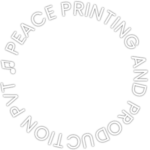It is the world of film editing, where the magic of storytelling truly comes to life. In this comprehensive guide, I’ll tell you art of editing short films (Editing Techniques) by uncovering techniques that surely elevate cinematic experience.From cutting-edge transitions to seamless scene sequencing, I’ll explore detailed strategies which transform raw footage into captivating stories. So, let’s start this journey together and unlock the secrets of editing mastery.
- Understanding the Basics
It’s essential to grasp the fundamental principles of film editing before diving into advanced techniques. In fact, editing is the process of selecting, arranging and manipulating visual and auditory elements to construct an engaging story.
You must familiarize yourself with editing terminology, such as cuts, transitions, and continuity editing, to build a solid foundation for your editing journey.
- Crafting Story Flow
There lies the ability to shape story flow and pacing at the heart of effective editing. Experiment with different editing styles and rhythms to evoke specific emotions and maintain audience engagement.
You should utilize techniques such as cutting on action, match-cuts, and montage sequences to seamlessly transition between scenes and propel the story forward.
Always remember that pacing is key, therefore, you must know when to linger on a moment and when to quicken the tempo to keep viewers on the edge of their seats.
- Enhancing Visual Cohesion
Visual cohesion is essential for creating a polished and professional-looking short film. Pay attention to continuity and consistency in framing, composition, and color grading to ensure a seamless viewing experience.
You should use techniques like shot reverse shot, eyeline matching, and graphic matches to maintain visual continuity and guide the viewer’s eye across the screen.
Additionally, experiment with visual effects and overlays to add depth and dimension to your footage, enhancing its visual appeal.
- Harnessing the Power of Sound
In fact, sound design plays a crucial role in enhancing the emotional impact and immersive quality of a short film. Do not hesitate to experiment with different soundscapes, music tracks and sound effects to create mood and atmosphere.
Pay attention to audio continuity and synchronization, ensuring that sound elements complement the visual narrative seamlessly. Utilize techniques such as sound bridges, ambient noise, and diegetic vs. non-diegetic sound to immerse viewers in the world of your film.
- Embracing Creative Experimentation
Editing is an inherently creative process, offering endless opportunities for experimentation and innovation. Don’t be afraid to think outside the box and push the boundaries of traditional editing techniques.
You may explore unconventional transitions, experimental montage sequences, and avant-garde editing styles to infuse your short films with a unique artistic vision.
Always remember that creativity knows no bounds, therefore embrace experimentation and let your imagination soar.
- Seeking Feedback and Iteration
Editing is a collaborative job, and seeking feedback is essential for mastering your craft. Share your work-in-progress with trusted peers, mentors, or online communities to gain fresh perspectives and constructive criticism.
You should refine your storytelling techniques and enhancing the overall quality of your short films, therefore, be open to feedback and willing to iterate on your edits. Remember, every edit is an opportunity to learn and grow as an editor.
In short, mastering the art of editing is a journey of exploration, experimentation, and continual learning.
You can take your short films to new heights of cinematic excellence by understanding the fundamental principles of editing, harnessing the power of narrative flow and visual cohesion, and embracing creative experimentation.
So, roll up your sleeves, fire up your editing software, and let your creativity run wild as you embark on this exhilarating journey of editing mastery.
Read More: The Ethics of Documentary



